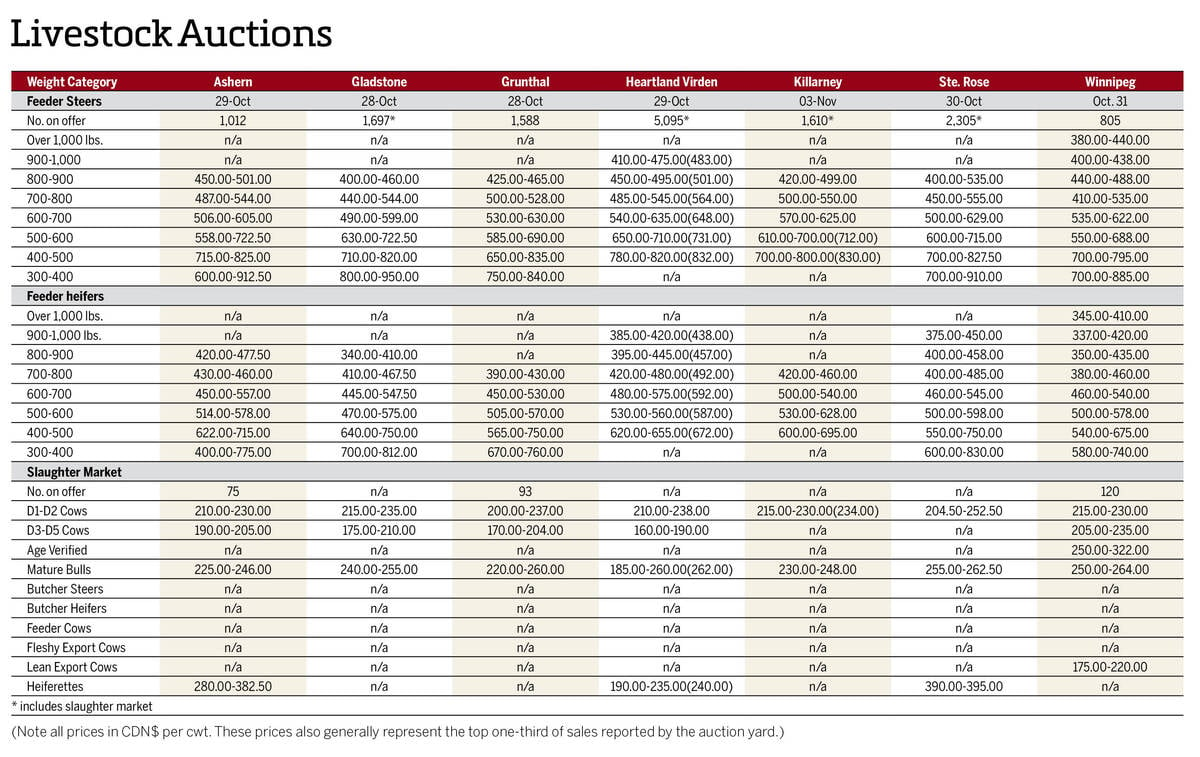The ICE Futures canola market chopped around within a wide range during July and started August at the lower limit of that range. Relatively favourable North American crop conditions, bearish technical signals and losses in outside markets weighed on values.
The November contract hit a high of just over $680 per tonne on July 23 but neared the $600 per tonne level as the new crop year got underway Aug. 1. While that psychological level could be hard to break below, many analysts now think canola futures could see a five at the front before all is said and done.
Fund traders were busy buying back short positions when prices were trending higher, but were back on the sell side and putting on large short positions as values threatened to drop lower.
Read Also

Manitoba cattle prices, Nov. 4
Manitoba cattle sale prices for the week of Oct. 28 to Nov. 4, 2025.
A ruling from the U.S. Appeals Court in late July, rejecting a decision by the Environmental Protection Agency to deny waivers from biofuel blending rules to smaller oil refiners, was viewed as negative for soyoil demand and weighed heavily on that market.
However, pressure is coming from some sectors of the U.S. government to adjust tax credit rules that would eliminate the import of used cooking oil from China for use in biodiesel production. That would theoretically cause a surge in demand for soyoil, although nothing has happened yet.
Meanwhile, all eyes will be on weather and production prospects because August is a key month for crop development. Conditions in the U.S. have been nearly ideal, and the resulting weakness in soybeans and corn has spilled into the canola market.
November soybeans hit a contract low of US$10.13 per bushel on Aug. 1, with the futures threatening a move below $10 per bushel. Both the September and December corn contracts moved below $4 per bushel, a level not seen in a front-month corn contract since 2020.
Canadian growing conditions are generally better in 2024 compared to recent drought years, but there has been enough heat and dryness that yields are unlikely to live up to earlier expectations, especially in Alberta. The likelihood of tighter supplies should be supportive in the long run, but the market will first need to get through the period of seasonal harvest pressure.















